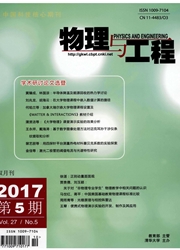

 中文摘要:
中文摘要:
The efficiency and mechanism of an active control device ‘‘Spark Jet' and its application in shock-induced separation control are studied using large-eddy simulation in this paper.The base flow is the interaction of an oblique shock-wave generated by 8° wedge and a spatially-developing Ma = 2.3 turbulent boundary layer.The Reynolds number based on the incoming flow property and the boundary layer displacement thickness at the impinging point without shock-wave is20000.The detailed numerical approaches were presented.The inflow turbulence was generated using the digital filter method to avoid artificial temporal or streamwise periodicity.The numerical results including velocity profile,Reynolds stress profile,skin friction,and wall pressure were systematically validated against the available wind tunnel particle image velocimetry(PIV) measurements of the same flow condition.Further study on the control of flow separation due to the strong shock-viscous interaction using an active control actuator ‘‘Spark Jet' was conducted.The single-pulsed characteristic of the device was obtained and compared with the experiment.Both instantaneous and time-averaged flow fields have shown that the jet flow issuing from the actuator cavity enhances the flow mixing inside the boundary layer,making the boundary layer more resistant to flow separation.Skin friction coefficient distribution shows that the separation bubble length is reduced by about 35% with control exerted.
 英文摘要:
英文摘要:
The efficiency and mechanism of an active control device "'Spark Jet" and its application in shock-induced separation control are studied using large-eddy simulation in this paper. The base flow is the interaction of an oblique shock-wave generated by 8° wedge and a spatially-developing Ma = 2.3 turbulent boundary layer. The Reynolds number based on the incoming flow property and the boundary layer displacement thickness at the impinging point without shock-wave is 20000. The detailed numerical approaches were presented. The inflow turbulence was generated using the digital filter method to avoid artificial temporal or streamwise periodicity. The , merical results including velocity profile, Reynolds stress profile, skin friction, and wall pressure were sys- tematically validated against the available wind tunnel particle image velocimetry (PIV) measure- ments of the same flow condition. Further study on the control of flow separation due to the strong shock-viscous interaction using an active control actuator "'Spark Jet'" was conducted. The single-pulsed characteristic of the device was obtained and compared with the experiment. Both instantaneous and time-averaged flow fields have shown that the jet flow issuing from the actuator cavity enhances the flow mixing inside the boundary layer, making the boundary layer more resis- tant to flow separation. Skin friction coefficient distribution shows that the separation bubble length is reduced by about 35% with control exerted.
 同期刊论文项目
同期刊论文项目
 同项目期刊论文
同项目期刊论文
 期刊信息
期刊信息
